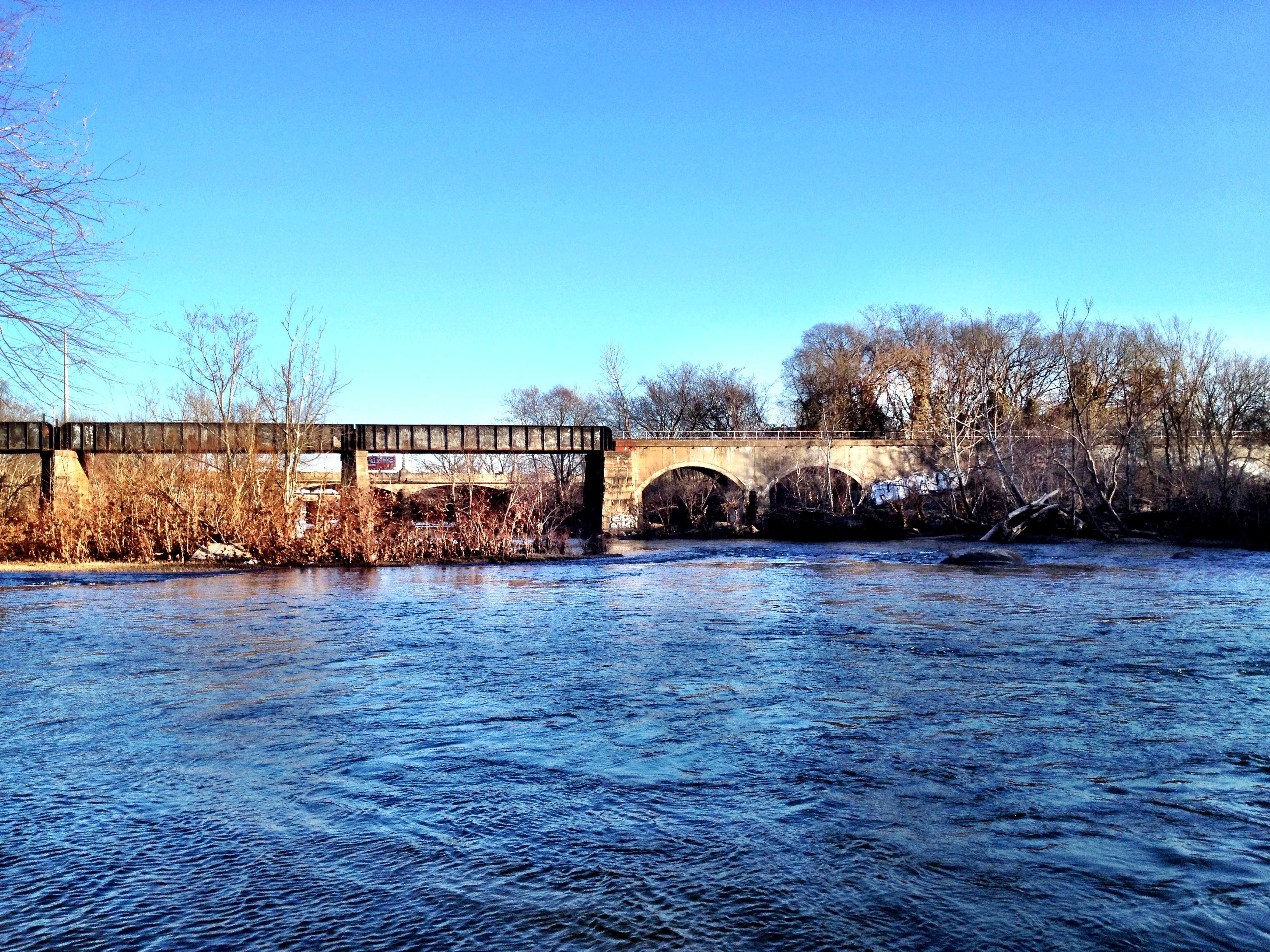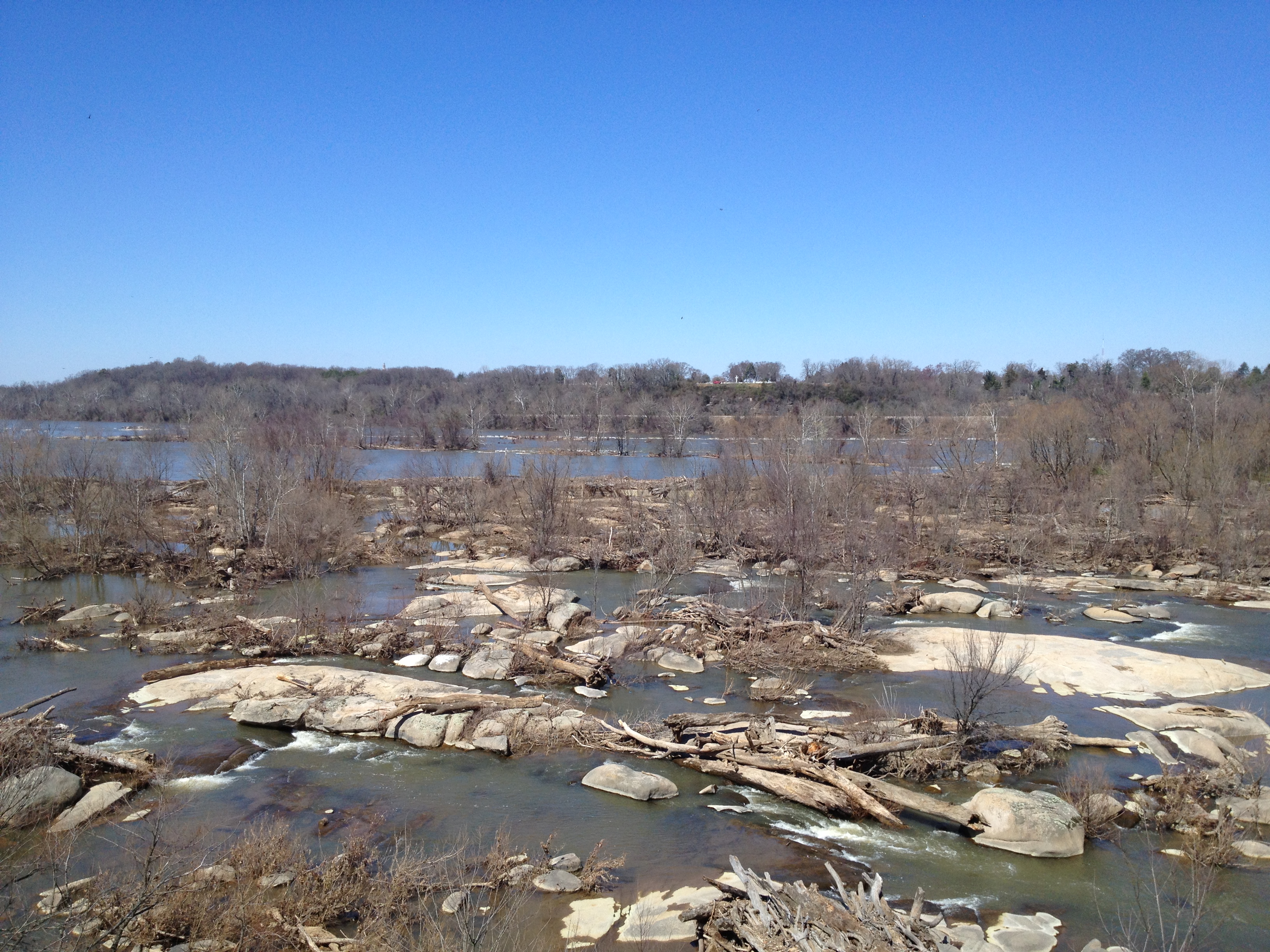

 Since childhood, I have consistently swam, fished, wakeboarded and explored a variety of rivers, lakes and ocean. My experience in and around watershed has been extensive. However, I until recently, I failed to acknowledge the importance of these watersheds outside of my own personal recreation. When I first arrived at University of Richmond, the James River was a mystery that I did not bother to look into. Throughout my first year at Richmond, I visited Belle Isle a time or two and frequently mountain biked along the shores of the James. I did not learn the real significance of the river until I joined Earthlodge. Rivers connect people to cities and influence how people view their sense of place.
Since childhood, I have consistently swam, fished, wakeboarded and explored a variety of rivers, lakes and ocean. My experience in and around watershed has been extensive. However, I until recently, I failed to acknowledge the importance of these watersheds outside of my own personal recreation. When I first arrived at University of Richmond, the James River was a mystery that I did not bother to look into. Throughout my first year at Richmond, I visited Belle Isle a time or two and frequently mountain biked along the shores of the James. I did not learn the real significance of the river until I joined Earthlodge. Rivers connect people to cities and influence how people view their sense of place.
The James River serves as he most important and central feature of Richmond. Throughout the semester, the significance of the James throughout Richmond’s founding and history, economic development and sense of place and bring people together has become increasingly apparent. Kenta commented on the importance of the James and how it defines the city, which resonated with me. Without the James, it is not likely that there would be the abundance of parks that the James River Park system has. The James creates a reason to conserve and created protected areas. Without the James, the Buttermilk and North Bank trails that I frequently mountain bike would not have a reason to be there. Through the activities of Earthlodge, I have realized the importance of the James. If I had not volunteered with Ralph White to pick up trash on Mayo Island, then I would have not realized the importance of the James in bringing together people and defining place. While on the James River, he explained how historically, the James provided fish for a variety of conflicting tribes, but when fishing season hit a peak, the opposing Indian chiefs came together to put their differences aside to focus on the productive harvest. Even today, White noted, the James brings together people from all classes. In one stretch of the river homeless people fish from the shore to keep fish for dinner, while fancy fly-fisherman wade in the rapids to target smallmouth bass and American Shad. Simultaneously, children play in the sand along the shore and kayakers travel through America’s best urban white water. Although I have had extensive experiences with others on rivers, I have never been able to verbalize the characteristic of moving water to bring people together until now.
In other cities around the world, rivers continue to have influence to connect people to their cities. As I mentioned in an earlier post, the Colorado River plays a critical role in Austin, Texas. The river is dammed into large lakes, which support year round recreation, including fishing, boating, swimming and kayaking. Downtown Austin hugs Lady Bird Lake, and provides beautiful views of green space. In Austin, the river serves a similar purpose as the James does for Richmond. The Colorado provides a center for the city to congregate as well as a place that brings people together, such as events like Austin City Limits music festival that centers along the shore of Lady Bird Lake. However, rivers serve far different purposes in places like the Amazon. In the Amazon, rivers serve as an extremely important feature in the Amazon rainforest, such as a major source of transportation and as a food source. In the remote stretches of southwestern Amazonia, the Peruvian city of Pucallpa lies at the end of the road system. From here, the only source of transportation for the various loggers, rubber tappers, drug cultivators and indigenous people are the Ucalayi River and Abujao River (see map). In these communities, rivers facilitate travel to Pucallpa for necessary services or goods. Additionally, the river provides a significant source of protein for many of these communities. Without the river, there would be no reason to live there.
Learning about our watershed and the connections between it and the people will be important in preserving the health of our watersheds. The importance of rivers in providing ecosystem services, recreation, and transportation stated above implies that we should strive to protect them. Forsyth argues that individuals are more likely to work to protect streams and rivers in their watershed if they are more aware of local water features. I can personally attest to Forsyth’s argument. Since I began to learn more about the James through class, I definitely have a stronger desire to protect it. Groffman states the dramatic effects urbanization has had on riparian areas and watersheds. This will likely continue as population continues to grow, especially in the west, where there is more room to grow. By focusing part of environmentalism on education, watersheds can be partially protected. Lauren talks about how her group is working to raise awareness in the James River watershed by adding signs on campus. This is a small, but meaningful way to raise awareness, which could in turn serve to protect the James River watershed.
Through my growth from Earthlodge, I have learned the physical, political and social characteristics of the James River. More generally, I have learned the importance of rivers in the larger context in the connection between people and place. As I continue to learn of their importance, I hope to apply my knowledge to future situations. When I go back to Austin, I will now view the Colorado in a different context, outside of my own use. I will observe how it serves to connect people to other people and helps define the place that is Austin. Furthermore, when I spend six weeks in Pucallpa this summer, I hope to apply what I have learned about the characterstics of watersheds and contextualize the watershed within the perspective of local people. As I plan to spend much of my free time on the water, understanding the importance of watersheds will be invaluable knowledge.
